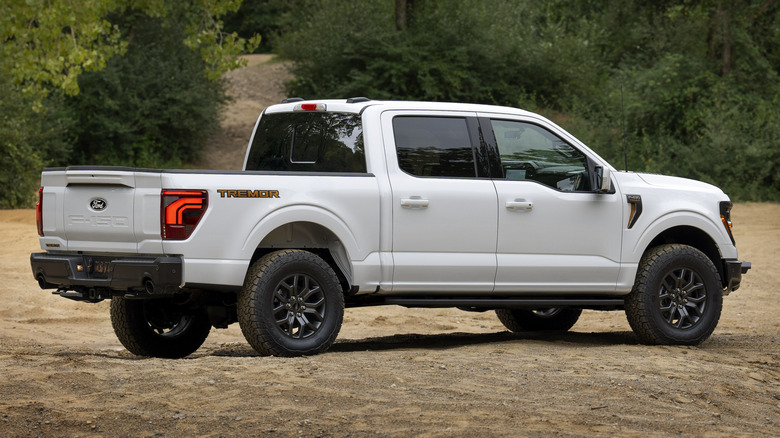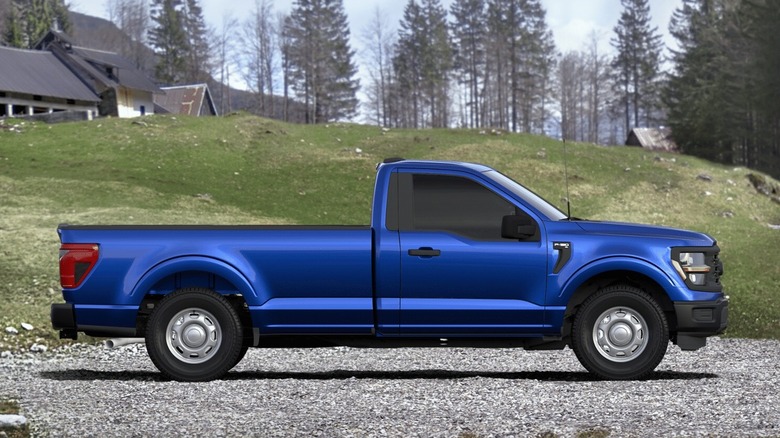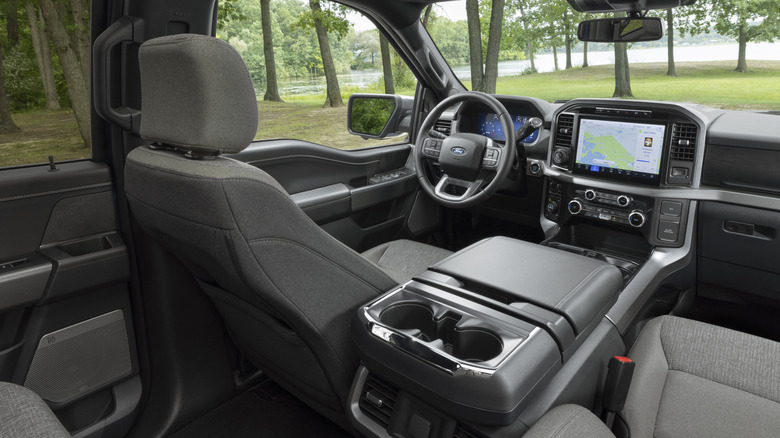Why Are Pickup Truck Beds Getting Smaller?
If you've glanced at a pickup truck in the last five, ten or even 20 years, you've surely noticed that most of them have four doors and a relatively small bed. Indeed, your average modern pickup has a very different profile than trucks we remember from the '80s and '90s, and there's been a lot of discourse over shrinking pickup beds. But are truck beds actually shrinking? If so, why has that happened?
It's actually not so much that the physical truck beds are shrinking in size; it's that today's most popular truck layouts have shorter beds, and therefore, the average truck bed size is shrinking. The simple reason for that is passengers. Even more so, shrinking pickup beds are a sign of just how much the average pickup buyer has changed in recent decades.
You can get a good sense of this trend by looking at the current Ford F-150 lineup. The immensely popular F-150 regularly sits at or near the top of America's best-selling vehicles list, and Ford currently offers the F-150 in three different cab configurations and three different bed lengths, one of which is a lot less popular than the others.
The changing shape of pickups
For most of the 20th century, when one pictured a pickup truck, that truck usually had a short cab and a long bed. Hauling cargo was the primary reason someone would buy a truck, and the more cargo space it could squeeze into its overall footprint, the better. Two people could comfortably ride in the cab, or three in a pinch. Most pickups were not purchased to be family haulers or comfy daily drivers.
But starting in the 1990s, extended-cab trucks began to get more popular, followed by pickups with small rear doors and small back seats. Then, the full-fledged crew cab trucks began to dominate the market in the mid-2000s, and American pickup buyers have never looked back. But this shift in tastes doesn't mean the more traditional pickup layouts have gone away.
Ford will still happily sell you a brand new F-150 with a smaller cab and either a 6.5-foot short bed or an 8-foot-long bed, with the long bed trucks being especially rare these days. Looking back, these were the same two bed lengths offered on the F-150 30 years ago. The big change is that many of today's pickup buyers prefer the third variation, a shorter 5.5-foot bed, coupled with the more spacious SuperCrew cab.
A little less bed, a lot more cab
The overall size of pickup trucks has grown, as is the case with just about every other car on the road. But the bigger change with modern trucks is simply the ratio of cab to bed. Outside of dedicated work trucks, fewer and fewer pickup buyers want a regular cab pickup (and the longer beds they offer).
When equipped with a full-size four-door cab, modern trucks become do-it-all vehicles. They have towing and off-road capability truck buyers have always expected, combined with family-friendly interior space and comfort that can rival or beat most sedans. If you want to spend the money, you can opt for them with amenities and creature comforts to rival dedicated luxury vehicles. Even if you don't regularly haul passengers in the backseat, crew cab trucks offer a large volume of fully secure, weatherproof storage in their cabs, which helps to make up for their smaller bed volumes.
We've used the current Ford F-150 as the example here, but the same trend away from bed size and toward cab size has happened across all brands and all sizes of pickup. From the smaller mid-size trucks, all the way up to heavy-duty models. So yes, the bed length of the average pickup on American roads has indeed gotten shorter. But ultimately, it's not that the physical length of available beds has shrunk, it's that the modern pickup buyer is opting for a little less bed and a lot more cab.


